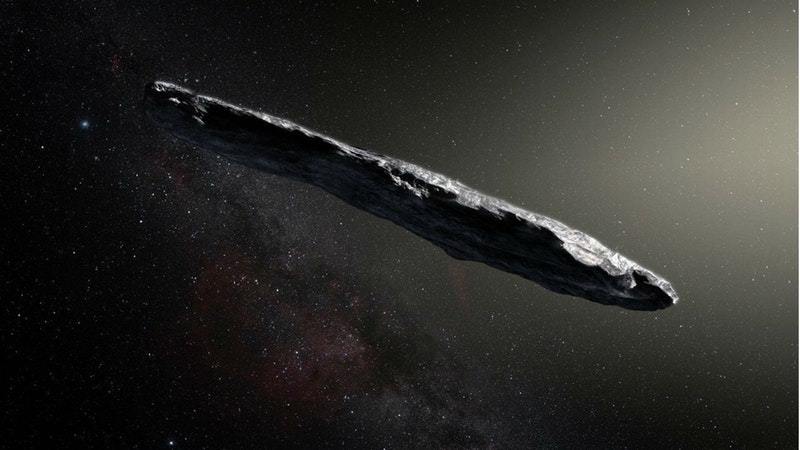A lost interstellar asteroid has entered the solar system after wandering between the stars for hundreds of millions of years, scientists believe.
The unique object, named Oumuamua, is highly elongated, about 400 metres (1,312 ft) long and coloured dark red. It is the first space rock from outside the solar system ever observed by astronomers.
A telescope in Hawaii designed to spot Near-Earth Objects (NEOs) picked up the asteroid on October 19 as a faint point of light moving across the sky.
Moving at 95,000 kilometres per hour (59,030 mph), Oumuamua was at first thought to have travelled from the bright star Vega, 25 light years away in the northern constellation of Lyra.
But Vega was not even close to its present position 300,000 years ago, when its journey would have started.
That has led scientists to speculate that the asteroid is an interstellar wanderer that has stumbled across our solar system.
An interstellar visitor…scientists have confirmed that an intriguing asteroid that zipped through our solar system in Oct. is the 1st confirmed object from anther star! Learn more about this rocky, cigar-shaped object: https://t.co/DDXYDMT7ic pic.twitter.com/GUBWOQtnaU
— NASA (@NASA) November 20, 2017
Dr Karen Meech, from the Institute for Astronomy in Hawaii, said: “Oumuamua may well have been wandering through the Milky Way, unattached to any star system, for hundreds of millions of years before its chance encounter with the solar system.”
Observations using different telescopes showed that the asteroid’s brightness varied dramatically by a factor of 10 as it span on its axis every 7.3 hours.
“This unusually large variation in brightness means that the object is highly elongated: about 10 times as long as it is wide, with a complex, convoluted shape,” said Dr Meech.
“We also found that it has a dark red colour, similar to objects in the outer solar system, and confirmed that it is completely inert, without the faintest hint of dust around it.”
The asteroid’s properties suggest it could have a high metal content and lacks significant amounts of water or ice. Its surface has been darkened and reddened by the impact of cosmic rays over millions of years.
Astronomers estimate that interstellar asteroids pass through the inner solar system about once a year, but they are faint and hard to spot.
Oumuamua was discovered by the 1.8 metre Pan-STARR telescope in Hawaii, which is part of a system set up to track potentially threatening NEOs.
Other telescopes including the European Southern Observatory (ESO) Very Large Telescope in Chile were quickly deployed to study the object in more detail.
Speed was vital with Oumuamua fading rapidly as it headed away from the sun and back out of the solar system, the scientists reported in the journal Nature.
Dr Olivier Hainaut, from the ESO in Garching, Germany, said: “We are continuing to observe this unique object, and we hope to more accurately pin down where it came from and where it is going next on its tour of the galaxy.”






